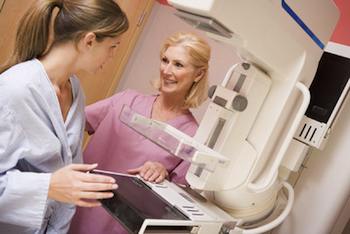- MENU
- HOME
- SEARCH
- WORLD
- MAIN
- AFRICA
- ASIA
- BALKANS
- EUROPE
- LATIN AMERICA
- MIDDLE EAST
- United Kingdom
- United States
- Argentina
- Australia
- Austria
- Benelux
- Brazil
- Canada
- China
- France
- Germany
- Greece
- Hungary
- India
- Indonesia
- Ireland
- Israel
- Italy
- Japan
- Korea
- Mexico
- New Zealand
- Pakistan
- Philippines
- Poland
- Russia
- South Africa
- Spain
- Taiwan
- Turkey
- USA
- BUSINESS
- WEALTH
- STOCKS
- TECH
- HEALTH
- LIFESTYLE
- ENTERTAINMENT
- SPORTS
- RSS
- iHaveNet.com: Health
Katherine Hobson

Access to doctors and financial pressures affect mammogram rates most
The recent brouhaha over breast cancer screening is about recommendations--what different experts say women of different ages should do. But even where the experts widely agree, a significant number of women simply aren't going in for screening mammography.
In 2005, just 71.8 percent of women between the ages of 50 and 64 and 72.5 percent of women ages 65 to 74 had received a mammogram within the previous two years, according to government figures.
"We're still not doing a very good job for women when there is no controversy over whether they should be screened," says Amal Trivedi, assistant professor in the department of community health at
If you subscribe to women's magazines or buy pink-ribboned products every October, you may not understand how anyone could miss the mammogram message. But plenty of women fall through the cracks. Research suggests several different reasons, says Susan Brown, a nurse and director of health education at Susan G. Komen for the Cure.
First, there are access and money issues. A review of existing research published last year in the
"Access to doctors stands out," says Rebecca Smith-Bindman, lead author of the study and a professor of radiology and epidemiology at the
Insurance also plays a role. Lack of healthcare coverage meant a lower likelihood of getting screened, according to Smith-Bindman's study. And a study led by Trivedi found that even small copayments were linked to lower screening rates. A copay of as little as
"And preventive services can be seen as less important than acute care--ER visits, for example, aren't influenced by a copay. But the benefits of a mammogram are less concrete and may occur years in the future," he says. In addition to the cost of the procedure, there are potentially indirect costs, says Brown, including transportation and lost wages.
In addition, Brown says, there are noneconomic reasons.
"Sometimes, women just get busy," she says. "They forget when they had their last mammogram" and, before they know it, they've gone past their recommended screening interval. (
Rates of mammography are even lower among African-American, Hispanic, and Asian women, and that cannot be entirely explained by disparities in income and education. (There are language barriers for new immigrants, for example.) The disparity in screening rates contributes to differences in mortality rates, says Smith-Bindman.
Myths, misconceptions, and misinformation also cause women to skip mammograms, says Jakob Jensen, an assistant professor of communication at
Jensen is worried about the new guidelines for this reason. It takes women a while to get in the habit of screening, he says, so telling them to start at 50 probably means they will not start until a few years later--and cases of cancer may be missed.
So how is this tide likely to turn? Plenty of people are working on it. Free and low-cost mammograms are available in many communities; for information, call 877-465-6636. Jensen has received an
The idea is that a woman would sit down at a computer in the doctor's office and answer a few questions about her personal and family history, other risk factors, and feelings about mammography, and she'd get information on the screen and in a customized pamphlet that would address her specific concerns or beliefs.
The software, which Jensen is also developing to tailor messages about colon cancer screening and which will be distributed free on
© U.S. News and World Report
AGING | ALTERNATIVE | AILMENTS | DRUGS | FITNESS | GENETICS | CHILDREN'S | MEN'S | WOMEN'S
Everyone's Talking About Mammograms, But Many Women Don't Get Mammograms